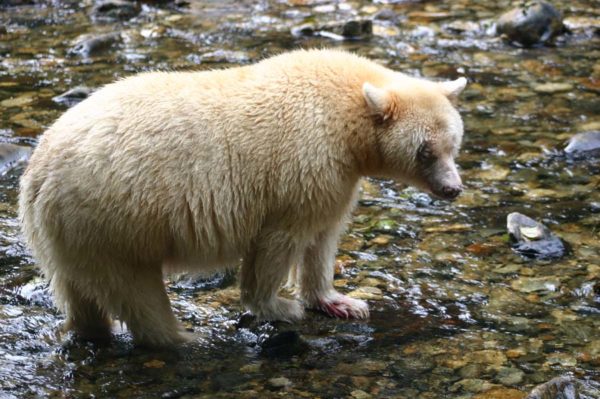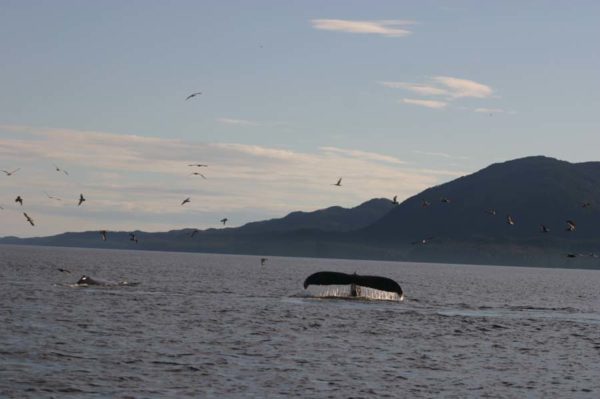Nature-rich B.C. First Nation chooses partnership with WWF-Canada
Last week, I travelled to Hartley Bay, a small community two hours by boat from Kitimat, B.C. It’s in the territory of the Gitga’at First Nation, an area of beautiful Great Bear Rainforest about twice the size of Prince Edward Island. Atop towering coastal cliffs perch thick forests, home to wolves, eagles, and the famous spirit bear. In the ocean, there’s salmon, sea lions, orcas and other whales — lots of whales. On the day I was out on the water with the Gitga’at, we must have seen 10 different humpbacks feeding on herring, and I was reminded that huge predators depend on tiny, vulnerable forage fish.

I was there to sign a protocol agreement with the Gitga’at First Nation. The agreement, one of the first of its kind between WWF-Canada and a First Nation, commits us to working together on marine protection in the region and creating opportunities for sustainable economic development. It’s a new type of partnership for us, and it’s one I’m really excited about.
My colleagues and I received a warm welcome in Hartley Bay, and the ceremonial signing of the agreement between the Gitga’at and WWF-Canada was honoured by traditional songs, dancing and feast of local fish, crab and berries. The next day, we were taken on a hike through the forest to see a spirit bear, and by boat to see whales and sea lions. I visited Cetacea Lab, a remote research station perched on a rocky promontory, where researchers use underwater microphones to record whale calls, and to study the interactions between different types of whales, including orcas, fins and humpbacks. The researchers work in partnership with the Gitga’at, and together have raised concerns about what an increase in shipping traffic would mean for marine life in the territory.

Recently, the Gitga’at, with other First Nations, won a slim victory against the proposed Northern Gateway Pipeline project, which would have seen 200 tanker ships filled with bitumen passing each year across their territory. Gitga’at territory is where the B.C. ferry Queen of the North went down in 2006. It’s hard to picture tankers being able to manoeuvre successfully through the narrow channels — and too easy to imagine the devastation that a bitumen spill would inflict.
Part of our new agreement with the Gitga’at commits us to working together to develop a marine-protection strategy for their territory. We look forward to drawing on the wealth of Gitga’at traditional knowledge about their territory, and sharing with them our expertise in marine conservation.
WWF-Canada works to build resilient communities that co-exist with a healthy environment. The Gitga’at recognize that the wellbeing of their nation is inextricably tied to the wellbeing of their land and water. With this new agreement, we have an opportunity to support each other’s goals, exploring economic development that will bring long-term benefits to the region.
